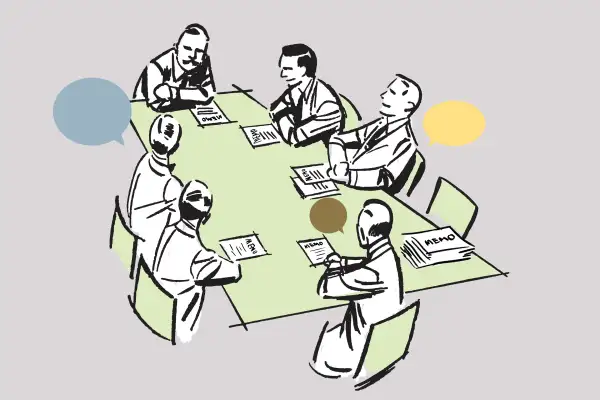Inside Amazon's Very Weird (But Very Efficient) Staff Meetings

You know how meetings tend to … suck? Massively?
Like, your boss talks for an hour about profit margins or “growth hacking” or whatever, and everybody else pretends to listen/care/not be actively DMing four coworkers a “this could have been an email” meme on Slack?
Apparently, that doesn’t happen at Amazon.
The company has meetings, obviously. Lots of them. But it also has a couple fail-safes in place to ensure they’re not the sort of dead-eyed affairs many of us are accustomed to.
For starters, whoever leads a meeting at Amazon has to write a document, usually about six pages long, to pass out at the start of it. Then everybody spends about 20 to 30 minutes silently reading and digesting what's on that document, before going over the entire thing together, page by page.
Also: There’s no PowerPoint. Ever.
It’s weird! But company reps say it works.
“The quality of the meeting is much better,” says Jacqueline Underberg, Amazon’s Director of Robotics. “I’m an engineer by training, I’m not a professional writer. It forces you to be very succinct and clear about what you’re supporting.”
Amazon talks a lot about it’s so-called “writing culture." CEO Jeff Bezos pens a highly-anticipated shareholder letter every year. A company website boasts that candidates are sometimes asked to submit a writing sample when they apply.
The memo-driven meetings play into the same mentality, and are driven from the top down. Whether you’re Nancy from HR or Bezos himself, “the expectation is you have a paper when you have a meeting,” Underberg says.
She's been with Amazon for about a decade, and leads a team tasked with testing new technologies and software updates. They meet often to work through business proposals, and to review performance. But thanks to the company's non-traditional approach to meetings, pretty much everything she does is collaborative.
“When you’re working on a paper, you’re constantly working with other people,” she says. “You’re thinking about the people in the room before they get there, people with different knowledge sets, and how to bring everyone up to the same level of understanding.”
The meetings "can be a little unsettling,” she admits. “Especially if you’re new, or if you prepared the document.”
But there’s also a sort of democratization that takes place, Underberg says, particularly among employees who don’t usually speak up at meetings, and are used to having their opinions overlooked.
“I’m naturally an introvert,” she says. “When I worked for other companies, I wasn't great at having a flashy PowerPoint. This equalizes folks, and enables them to present on the power of their ideas.”

